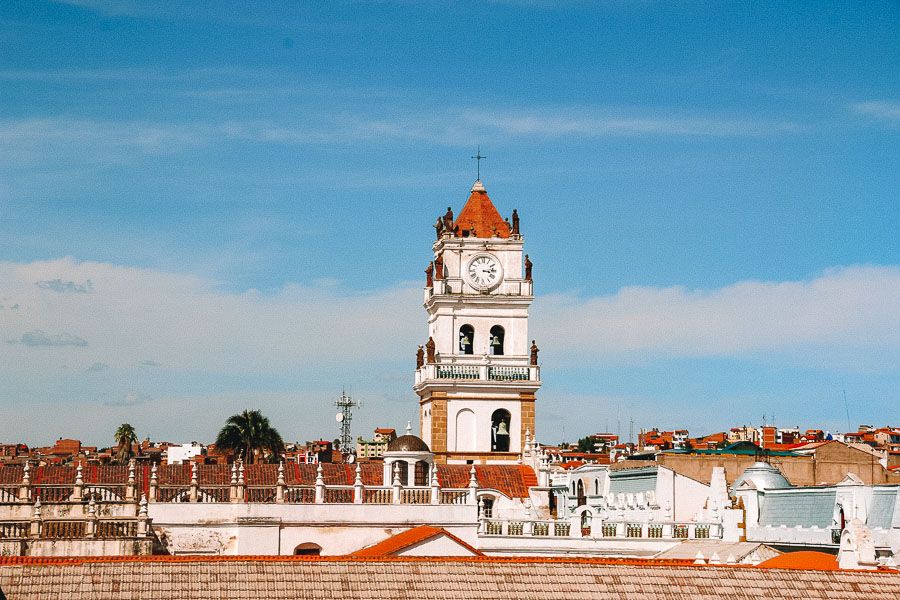
We present 3 Bolivian cities with different characteristics: The city of money, Potosi, The city of chocolate, Sucre, and the capital, La Paz.
We are now 4 days into our Bolivie including 3 days to explore the green, white and colourful lagoons of the south of the country and the famous Salar d’Uyuni. We’re now slowly making our way back to Peru, stopping off at various places along the way.
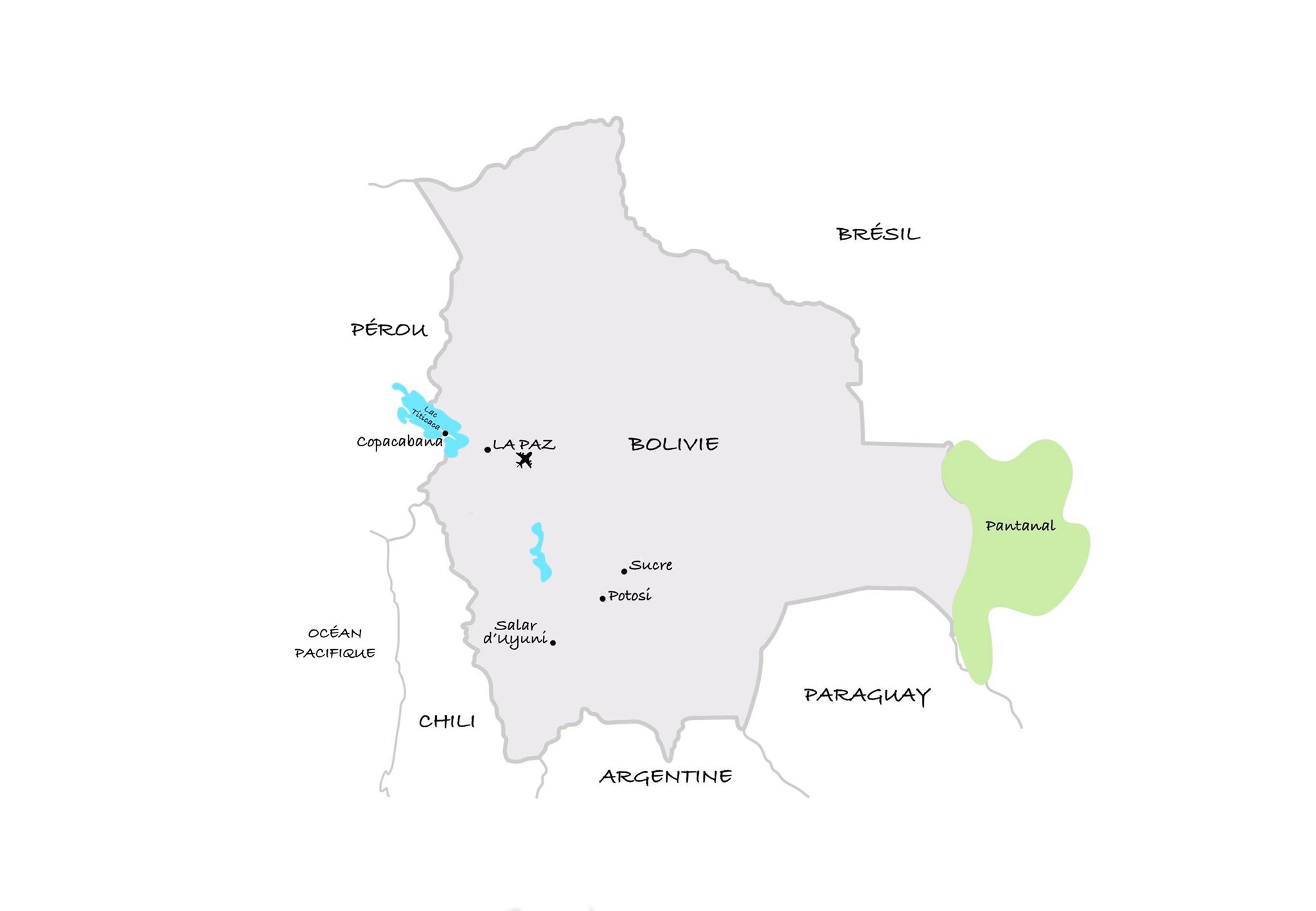 POTOSI: THE CITY OF MONEY
POTOSI: THE CITY OF MONEY
Potosi is home to more than 100,000 inhabitants the highest in the world; Situated at an altitude of 4,090 meters, the town’s development began when the Spanish discovered the silver on the hill overlooking the town. Mining is still the lifeblood of the town, not only for silver, but also for zinc, iron and tin. That’s how we spent a morning dressed as perfect minors. The tour begins with a trip to the store to buy a few offerings for the miners…the real ones! Armed with bags of coca leaves, drinks and sticks of dynamite, we set off to meet them. After collecting ourselves at the entrance, in front of this devil protecting the miners (he brings good luck and security) and making him some offerings, we slowly make our way into the mountain, passing through narrow and sometimes slippery galleries. It’s a steep road to get there, and you soon realize just how hard the work must be. After 20 minutes, we meet our first miner, working with precision to extract an ore as full of silver as possible.
We then continue a kilometer deep into the bowels of the mine to find groups of miners extracting large quantities of raw ore. We stop to chat with them, giving them a chance to take a break, have a drink and chat with us while we hand over our gifts. Their work, in the middle of the dust, loading waggons as in the days of Germinal and the coal mines in France, will have helped us gain humility about our condition as French people! We have nothing to complain about! Namely, part of the money you pay goes to pay your guide, of course, who is a former miner. The rest goes to a miners’ cooperative, which distributes it equally to all its members. The miners are happy to welcome you and show you their skills.
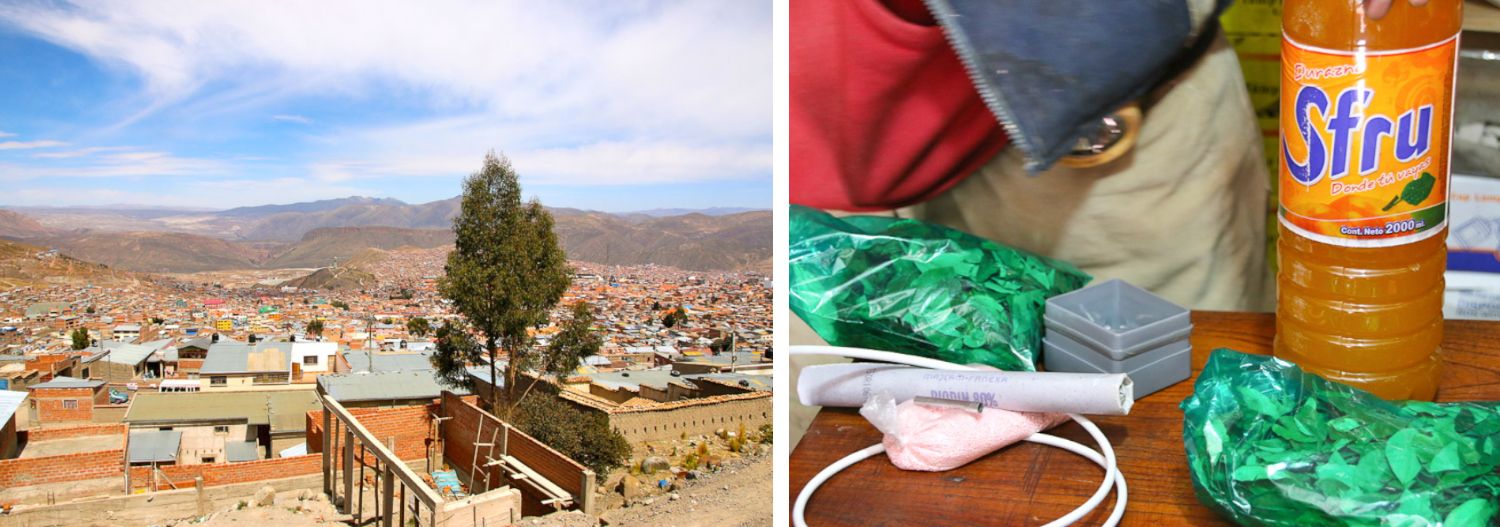
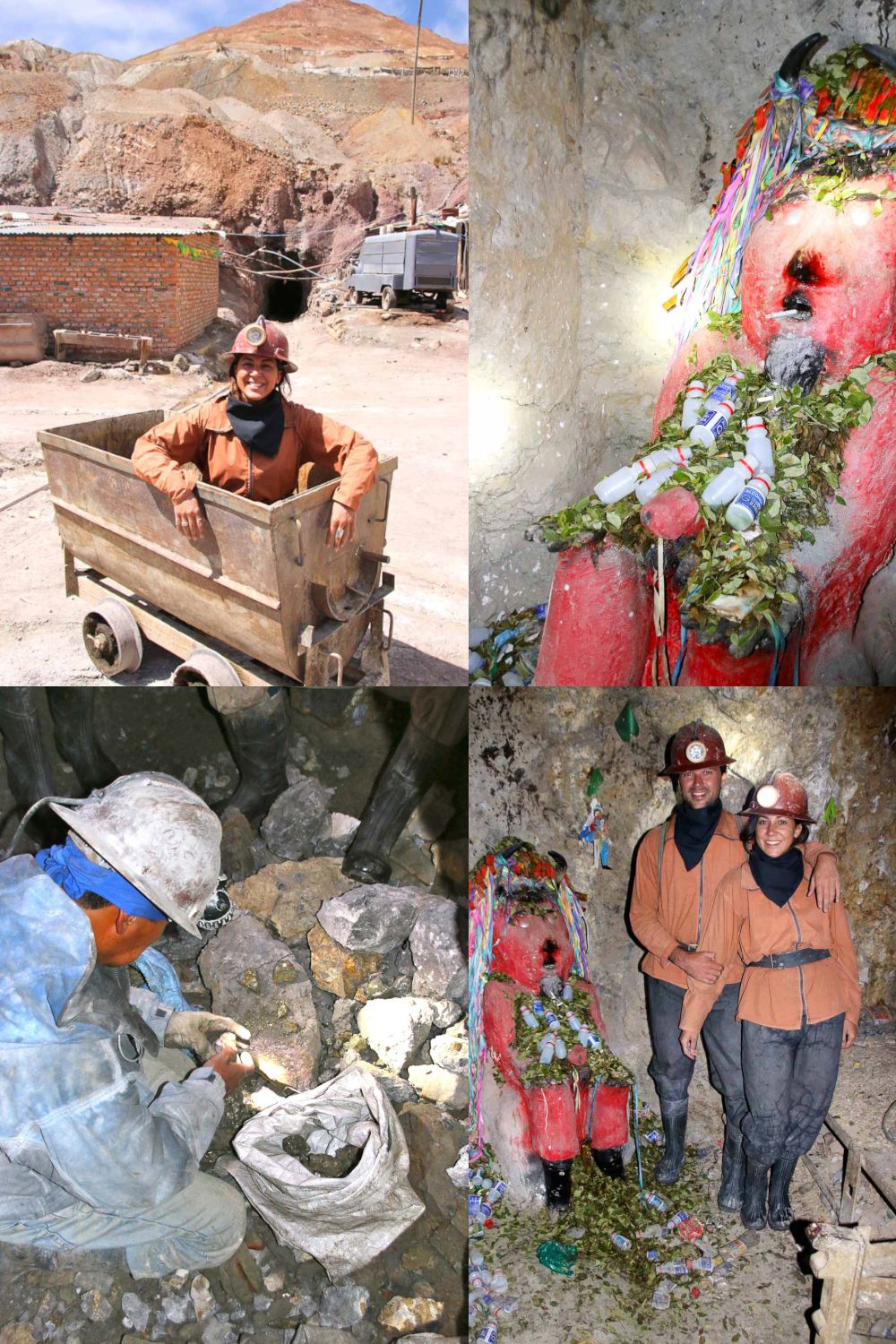

Back in town, you can stroll around the central square, through a few perpendicular streets with colorful facades, where the main attractions are the churches and the Musée de la Moneda. Given the proximity of the silver mine, the Spaniards built a factory where silver was processed to mint coins for the Spanish empire, not only in Spain but also for the territory that now includes Chile, Argentina, Bolivia, Uruguay and Peru, as well as China! The machines used to work silver bullion into coins are well worth a look. Don’t miss this very interesting step, which in my opinion is not about voyeurism but curiosity.

SUGAR: THE CITY OF CHOCOLATE
Our route continues through Sugar. This city colonial is the country’s constitutional capital and was founded by the Spanish in 1538. It boasts a number of treasures, including the convent San Felipe. Open only in the afternoons from 2:30 to 6:30 pm, the building is magnificent and its roofs offer a breathtaking view of the city. Back in the center with a full belly, we head for the central market for a milanese de pollo on one of the tables upstairs or a poulet frites on the ground floor before enjoying a nice fruit salad drizzled with chantilly cream in the back of the hall! If you feel like it, try their multi-colored cakes, thick and flamboyantly colored!
The city is also known as Bolivia’s chocolate capital, which is pretty funny for a city called Sucre! We tasted them and they’re really good! Don’t miss the chance to taste a Quinoa chocolate bar or hot pepper, especially Parati house located on Calle Daniel Calvo, a stone’s throw from Place du 25 Mai. You can also, on request, visit the factory outside town and enjoy a snack, obviously chocolate, at the Café para ti, rue audiencia. Last but not least, don’t refuse to stroll around the place from 25 May to discover the various monuments surrounding the square! Taste the Quinoa beer in the vegetarian restaurant El Condor coffee between Calle Calvo and Bolivar. A little marvel! If you have a little more time, you should know that every Sunday takes place in Tarabuco a huge crafts market, where the country’s communities come together to sell their wares. It is located south-east of Sucre, a 1? hour drive away. The city we’d like to have known is colonial, and this style is evident in its architecture and cobblestone streets. What really characterizes the village is the presence of several native communities that maintain their customs. Clothes are renowned for their quality. Go for it! You can then head due east to the Recoleta convent. A very pretty square awaits you with the “gourmet mirador” café, also offering a beautiful view of the city. The Spanish language center in Recoleta, The Celtic cross, host people for free if you book a course with them!
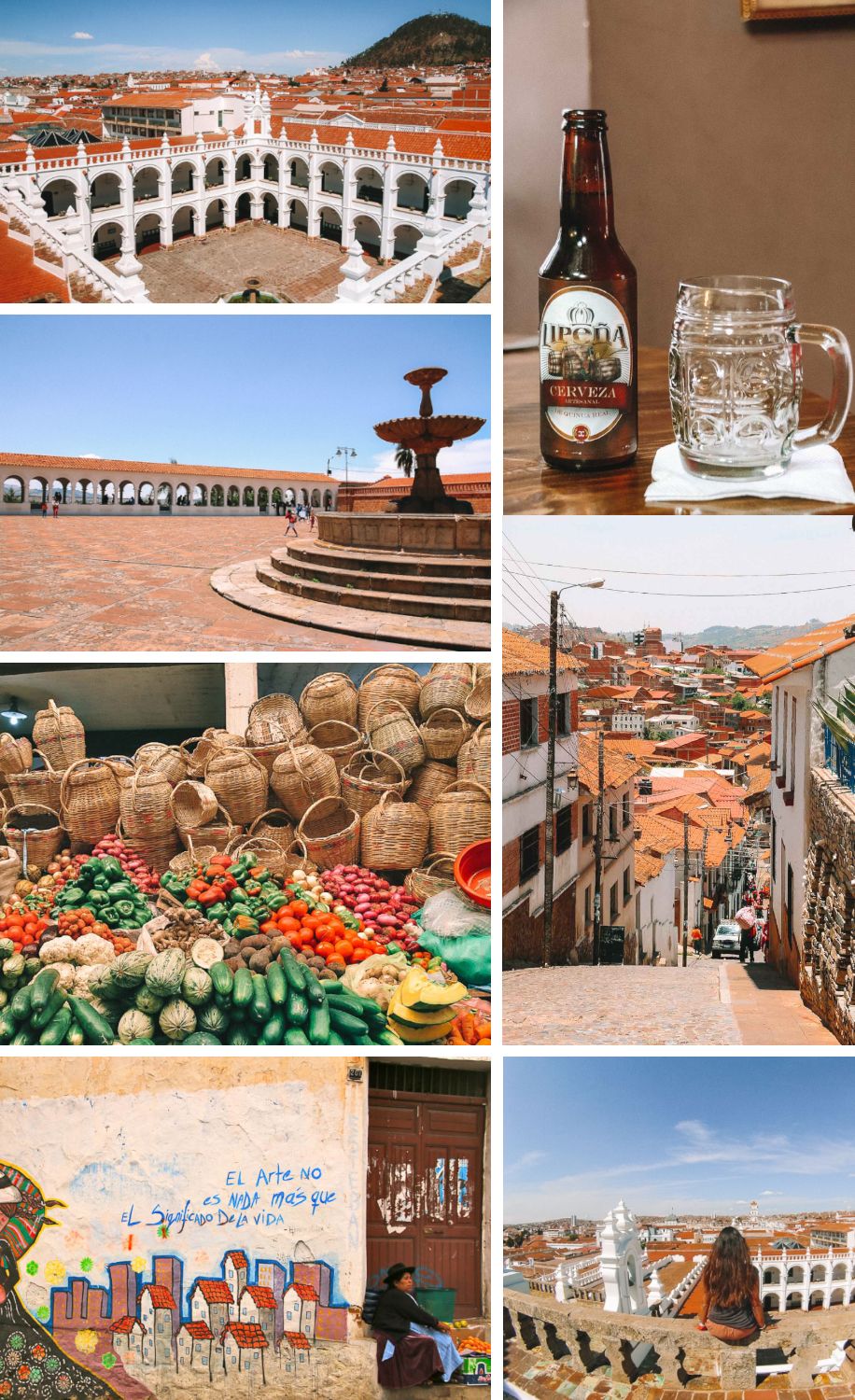
LA PAZ: THE CAPITAL
Make way for La Paz. This large city of over 2 million inhabitants is best known for its insecurity. Don’t worry, nothing happened to us, even if it’s true that you have to be careful, like in many big Latin American cities! The town isn’t very interesting, but there are 2 or 3 things to do if you’re just passing through.
-
Shopping and Jaen Street
If you haven’t done your shopping beforehand, you can do it on the street Linares and surrounding perpendicular streets. You’ll find beautiful fabrics, bags and sweaters in alpaca or wool, a real treat for the latest souvenirs. Peru and Bolivia are 2 incredible destinations for handicrafts, so make the most of it! There’s a nice little store “Artesania Sorata” which offers hand-embroidered Bolivian fabrics (www.artesaniasorata.com, calle Sagarnaga 303, near Linares) . This type of canvas can be found in some of the country’s chic hotels, such as theUyuni salt hotel where we stayed. It’s a gift idea to bring back to your little home. This small, often photographed Jaen street is a must-see for its colorful facades.
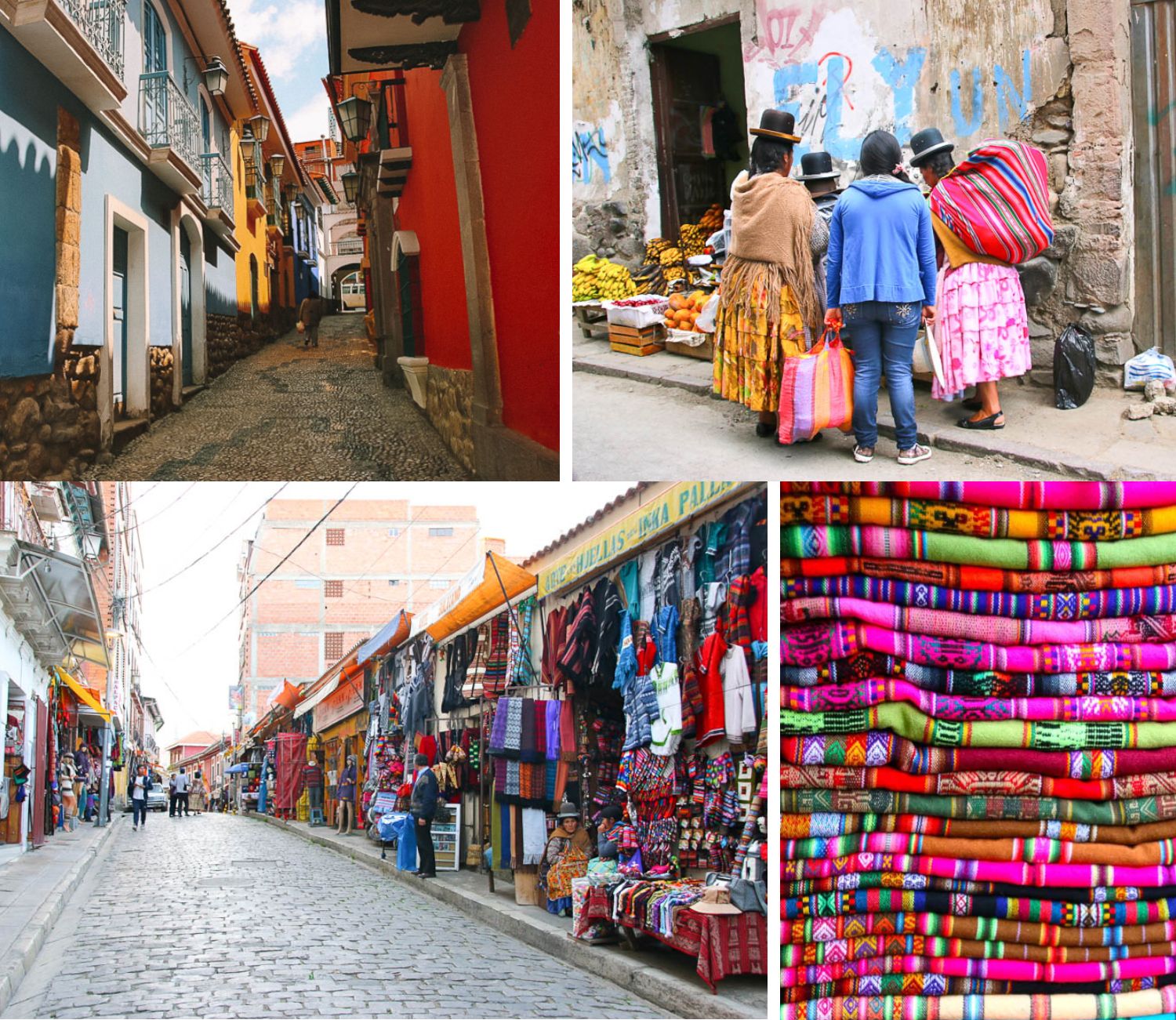
-
The witches’ market
One of the town’s unique features is a small witch market, where you can find a few souvenirs and see some unusual items, such as these dried llama foetuses.
-
The cable car
Finally, don’t forget to take the yellow line of the LaPaz. In service since 2014, it’s a means of public transport that’s highly suited to this bowl-shaped city. The view of the city and its surroundings is breathtaking, as it is surrounded by mountains. If you want to sleep in a cheap hotel close to the station, there’s the Aventure Brew for 50 pesos a bed in a dormitory. We stayed at a very friendly guesthouse, Casa Skyways at 23 euros per night, located 10 minutes by cab from the city center and a stone’s throw from the cable car. The rooms are spacious with a lovely view of La Paz, clean and the breakfasts are generous. the wifi works very well and the Moroccan-born owner has done his utmost to offer you quality service. We recommend this address.
-
The road to death
It’s from La Paz that you can get some adrenalin and thrills by booking a day to ride the Death Road. This road, which links La Paz (3800m) to Coroico (1100m), is a risky one, as you’ll be riding on the left, on a slope, on the side of a ravine, with trucks travelling in the opposite direction! This trip is done through an agency, and we recommend Vertigo near Linares which provides full equipment (knee pad, helmet, elbow pad..) with local guide. Good luck, adventurers!


